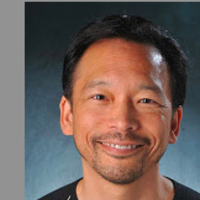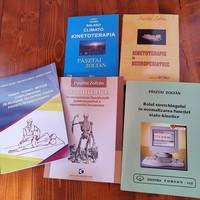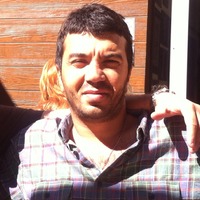
Maria Stokes
Professor Maria Stokes OBE PhD FCSP Professor of Musculoskeletal Rehabilitation, School of Health Sciences, University of Southampton, UK Head of Active Living Research Group http://www.soton.ac.uk/healthsciences/about/staff/mjs2.pagehttp://www.blog.soton.ac.uk/mskresearchRESEARCH INTERESTSWith a background in physiotherapy and PhD in Neuromuscular Physiology, my core research interest is: Optimising musculoskeletal health to enable active living and healthy ageing. Themes:1) Understanding mechanisms of musculoskeletal function (across the activity spectrum from elite sports to inactivity and deconditioning), and movement dysfunction and recovery (involving biomechanics of movement and physiology of neuromuscular control)2) Prevention and rehabilitation of musculoskeletal conditions involving movement dysfunction through tailored exercise programmes, targeting movement impairments to retrain movement control. 3) Enabling active living and maintain physical independence for as long as possible in later life, with a specific interest in exercising safely to prevent osteoarthritis in elite sport and recreational activities in the general population. 4) Development and application of health technologies to aid research, clinical assessment of effectiveness of rehabilitation, with a particular interest in rehabilitative ultrasound imaging of muscle (RUSI) for evaluation and biofeedback of muscle function, and Myoton technology for assessing muscle tone and mechanical properties. National and International Collaboration:A key feature of my research is multidisciplinary collaboration with experts in engineering sciences, physiology, sports science and various specialties in allied health (physiotherapy, occupational therapy, podiatry) and medicine (rheumatology, epidemiology, sports medicine, orthopaedic surgery, primary care medicine).Much of my work involves collaboration within the Arthritis Research UK Centre for Sport, Exercise and Osteoarthritis (involving seven UK universities: Nottingham, Oxford, Southampton, Bath, Loughborough, Leeds and University College London). Within the Centre, I lead the Work Package on ‘Mechanisms of Movement Dysfunction and Interventions’, which aims to better understand why movement patterns become abnormal and to develop exercise programmes to retrain control of movement to correct these patterns and help keep joints healthy. www.sportsarthritisresearchuk.org/seoa/index.aspxhttp://www.arthritisresearchuk.org/research/our-centres-of-excellence/aruk-centre-for-sport-exercise-and-osteoarthritis.aspx International collaborations include Australia, Canada, Estonia, USA, Ireland, Germany, Switzerland and the Netherlands. Commercial collaborators include technology companies and professional sports clubs, with a close partnership with Southampton Football Club. Research Approaches:Experimental methodological and physiological studies that underpin more clinically applied research. Evaluating health technologies and treatments in clinical trials. Conditions include back, hip, knee, shoulder and hand joint dysfunction, and muscle weakness and fatigue, due to joint disease, sports injury, deconditioning and neuromuscular disease.Publications: over 300142 Original scientific papers, reviews and book chapters
Phone: +44 (0)2380 596868
Address: Faculty of Health Sciences, Building 45
University of Southampton
Highfield Campus
Southampton SO17 1BJ
United Kingdom
Phone: +44 (0)2380 596868
Address: Faculty of Health Sciences, Building 45
University of Southampton
Highfield Campus
Southampton SO17 1BJ
United Kingdom
less
Related Authors
David Seamon
Kansas State University
Daniel Ribeiro
University of Otago
Brian Locke
Oregon State University
Tomasz Komendzinski
Nicolaus Copernicus University
pasztai zoltan
University of Oradea
Arnold, Y L Wong
Hong Kong Polytechnic University
Milena Doytcheva
EHESS-Ecole des hautes études en sciences sociales
Ozan Sever
Ataturk University
Dr Muhammad Zafar Iqbal I Q B A L Butt
University of the Punjab, Lahore, Pakistan
Ying Ying Leung
Duke-NUS Graduate Medical School
InterestsView All (10)










Uploads
Papers by Maria Stokes
using hand-held myometric technology. Monitoring changes in muscle properties with ageing in
community settings may provide a valuable assessment tool for detecting those at risk of premature
decline and sarcopenia.
Objective: This study aimed to provide objective data on the effects of ageing and gender on muscle tone
and mechanical properties of quadriceps (rectus femoris) and biceps brachii muscles.
Methods: In a comparative study of 123 healthy males and females (aged 18–90 years; n = 61 aged 18–35;
n = 62 aged 65–90) muscle tone, elasticity and stiffness were measured using the MyotonPRO device.
Results: Stiffness was greater and elasticity lower in older adults for BB and RF (p < 0.001). Tone was
significantly greater in older adults for BB but not for RF when data for males and females were combined
(p = 0.28). There were no gender differences for BB in either age group. In RF, males had greater stiffness
(young males 292 vs females 233 N/m; older males 328 vs females 311 N/m) and tone (young 16.4 vs
13.6 Hz; older 16.7 vs 14.9 Hz). Elasticity in RF was lower in young males than females but did not differ
between the older groups (both males and females log decrement 1.6).
Conclusions: Stiffness and tone increased with ageing and elasticity decreased. These
findings have
implications for detecting frailty using a novel biomarker. Age and gender differences are important to
consider when assessing effects of pathological conditions on muscle properties in older people.